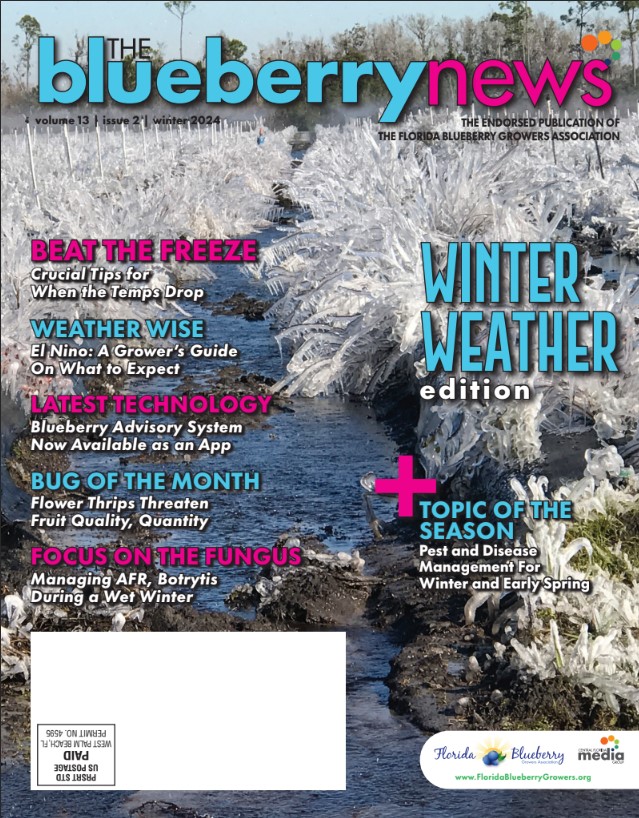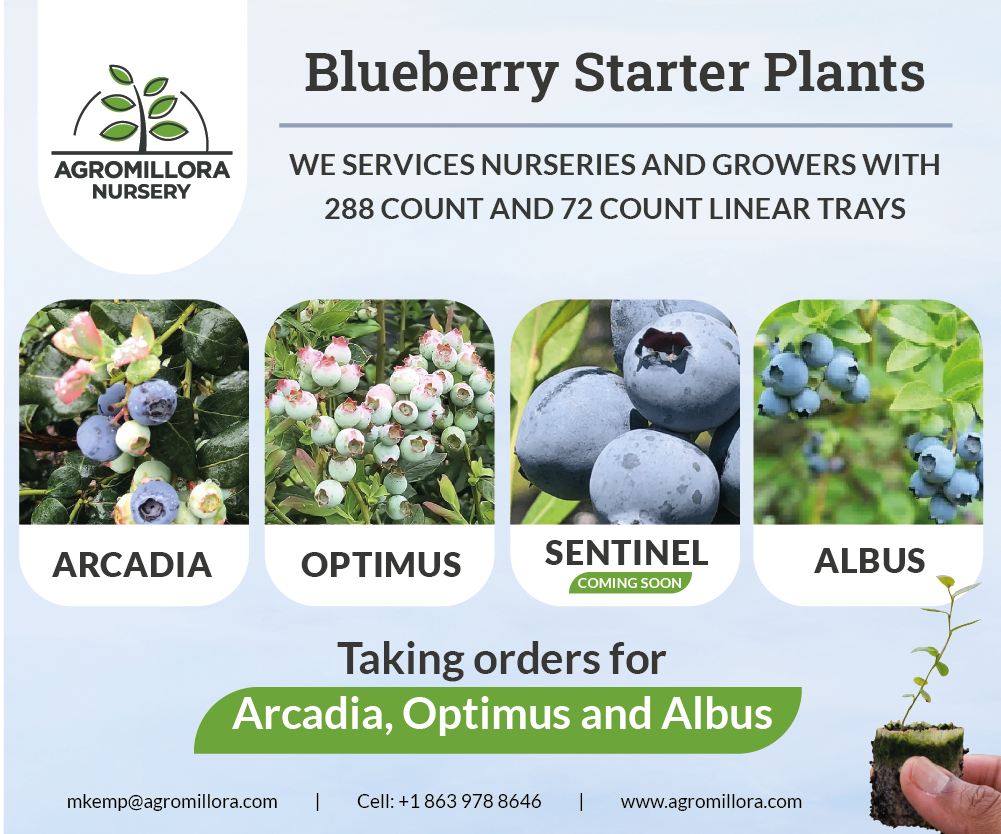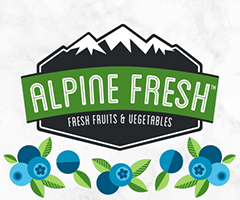How to Spot and Stop Anthracnose Fruit Rot
Anthracnose fruit rot (AFR), or ripe rot, is a fungal disease that can cause fruit softening, sunken lesions, and post-harvest rot of blueberry fruit. AFR has been observed across Florida in recent years and can sometimes be a significant issue. The disease is more severe when favorable weather conditions persist and when fruit remains on the bush for longer periods between harvests. However, there are fungicide controls and good management practices which can help reduce the impacts of this disease.
The causal pathogen for AFR in Florida is the fungus Colletotrichum gloeosporioides. The pathogen often overwinters on bud scales, stems and leaves (especially in evergreen systems where the leaves remain from the previous summer through harvest). Sticky orange spore masses are produced during warm wet weather conditions and are spread by water splash (rain or overhead irrigation). Spores infect blossoms and green through ripe fruit, spreading the disease when temperatures are at least 77°F during extended periods of leaf wetness duration. Infections that occur during bloom and fruit development will remain latent (produce no visible symptoms) until the fruit starts to ripen. In some cases, symptoms are not observed until after harvest when the fruit is being packed.
Symptoms include fruit softening and shriveling, with sunken lesions developing. In advanced stages, masses of orange or salmon colored spores can erupt from the lesions (Figure 1).
Figure 1. Colletotrichum sporulation on blueberry.
Regular spray applications of fungicides, beginning during bloom and continuing through harvest, can help reduce the incidence of AFR. Fungicides that can effectively prevent AFR disease when applied prior to infection occurring include Captan and Switch®. Azoxystrobin is also effective, but resistance to the fungicide has been observed in Florida. Follow good resistance management practices that include rotations of effective products during the season. Also consider tank mixing products that contain azoxystrobin (Abound® and other products) with Captan if resistance has been documented on your farm, or if stand-alone applications of Abound have not given satisfactory AFR control. Resistance was also recently observed to boscalid (one of the components in Pristine®).
The Blueberry Advisory System (BAS) is a tool for timing fungicide applications for AFR control. BAS will send a text and/or email to growers notifying them when there is an increased risk of AFR development, based on data from the closest FAWN weather station (Figure 2). Instead of applying fungicide on a calendar basis, growers can time applications for when there is a signal of moderate or high risk. This may lower the number of applications while still maintaining a good level of control, saving money on fungicide purchases. In addition, if there is only a moderate level of risk, a grower may decide to go out with a less expensive product such as Captan, while saving more expensive (and effective) products for when the risk of disease development is high. Growers can register for free for this tool at http://cloud.agroclimate.org/tools/bas/dashboard/disease.
Figure 2. Blueberry Advisory System risk signal example.
Additional information can be found in UF EDIS Publications PP337, Anthracnose on Southern Highbush Blueberry (edis.ifas.ufl.edu/pp337), and HS 1156, 2019 Florida Blueberry Integrated Pest Management Guide (edis.ifas.ufl.edu/hs380).
by PHILIP F. HARMON, PROFESSOR, DEPARTMENT OF PLANT PATHOLOGY, UF
& DOUG A. PHILLIPS, BLUEBERRY EXTENSION COORDINATOR, UF





